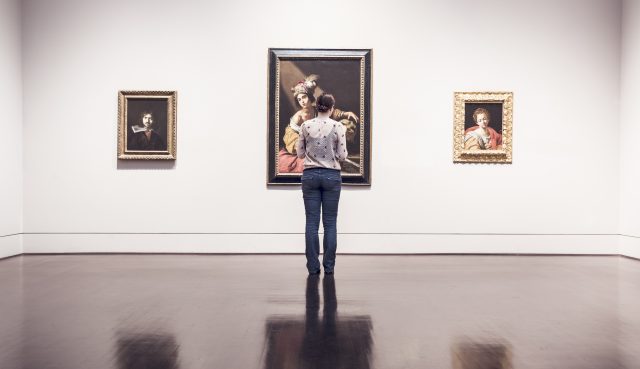If the thought of writing an art critique gets you down, this advanced formula is exactly what you need to protect your nervous system. Although artwork critique may sound intimidating, it is much simpler than it sounds. Let’s look at how to critique artworks using this simple formula:
Perfect art critique = description + analysis + interpretation + judgment
Art Critique: Description (what do you see?)
This stage is the easiest one. Just introduce the author, his/her work and describe your first impression. If you see sunflowers and a vase in the painting by Vincent van Gogh “Sunflowers”, state it in your artwork critique. Do not attempt to interpret something, just mention every detail. Don’t be afraid of stating something obvious. At this stage it is really necessary, and your teacher will never exclaim: “Thank you, Captain Obvious”.
These are the questions to guide your description:
- Who is the author? What is the title of the artwork? When was it created? Where is it exhibited?
- Does the artwork depict something? If yes, what is it? (In fact, in contemporary art the answer is frequently not that obvious.)
- What is the main thing you notice when you see the artwork for the first time?
- What are the rest of details which seem important as you keep looking at it?
Art Critique: Analysis (what has the artist done?)
At the stage of analysis you need to disclose the artist’s secrets. What has he/she done to impress the audience? These questions will help you:
- What materials did the artist use?
- How did the artist use the elements of art?
- colors (complementary, analogous, warm or cool, light or dark, bright or dull);
- lines (thick or thin, mostly vertical or horizontal, straight or curved, deep or shallow);
- shape (two-dimensional or three-dimensional, natural or abstract);
- texture (hard, soft, rough, abstract).
- How did the artist use the principles of design?
- Balance;
- emphasis;
- contrast.
Art Critique: Interpretation (what is the meaning of the artwork?)
Understanding what the artist has done, try to understand what he/she wanted to say through this artwork. What was his/her main message? Be careful, some artworks are so highly intellectual that the answer is not as obvious as you would like it to be. However, you should not be afraid of expressing your personal ideas and interpretations. Here are some leading questions:
- What do you feel when you look at the artwork? What is its dominant mood?
- What are the main artist’s messages you can find in this artwork?
- How do you understand these messages?
Art Critique: Judgment (is the artwork good?)
The formula of art criticism would be incomplete without this final stage of judgment and evaluation. First of all, you should avoid the confusion of art critique with negative criticism. You do not necessarily need to include negative remarks into your judgments. If you consider the artwork a masterpiece, you may confess it. The leading questions for this part are:
- Did your first impression of the artwork change during your analysis and interpretation? Why (not)?
- Did you learn something from this artwork (applied to your own artworks or personal life)?
- What is your main judgment about the quality of this artwork (use evidence from analysis and interpretation)?
So, this advanced formula of artwork critique will save you from unnecessary disappointment every time you need to critique art. Perfect art critiques and excellent grades for them will become a reality.

